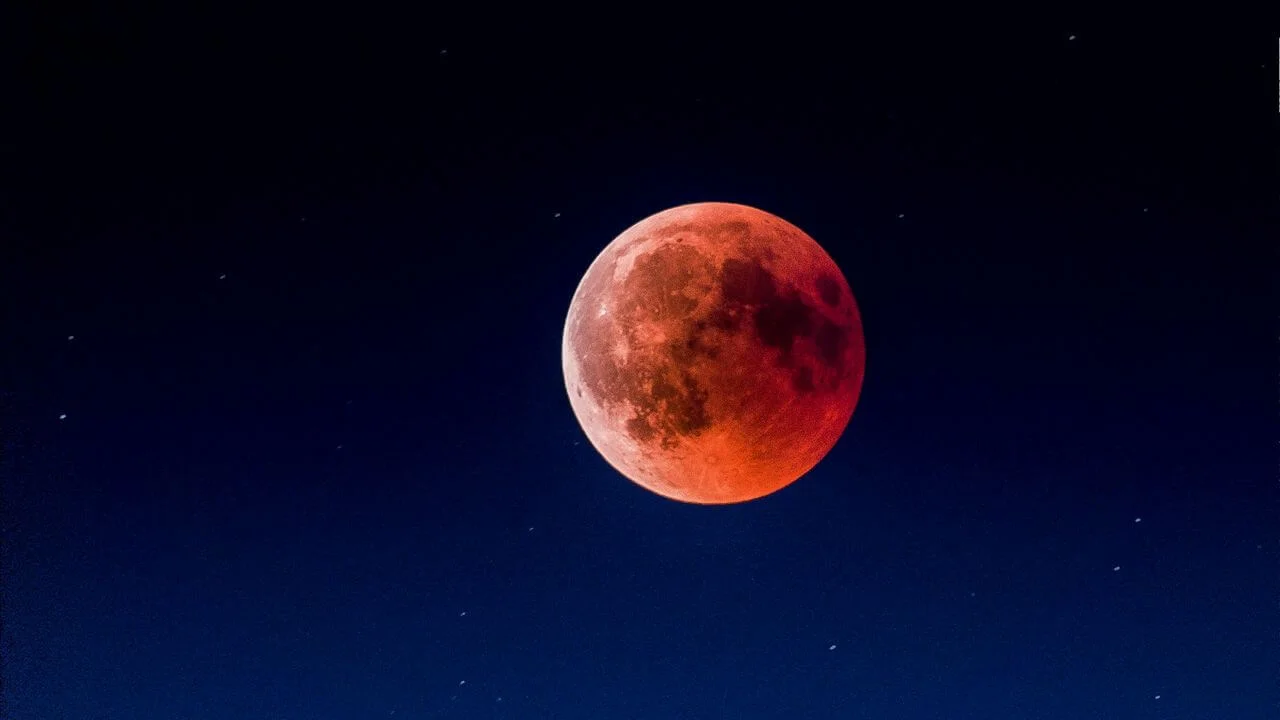Longest Blood Moon Eclipse Since 2022 Coming Soon
A rare total lunar eclipse will turn the Moon deep red this September, offering billions of people a chance to witness the spectacle.

On the nights of 7 and 8 September 2025, the Moon will undergo a striking transformation as a total lunar eclipse paints it a deep crimson. This phenomenon, often called a “blood moon,” occurs when Earth passes directly between the Sun and the Moon, casting its shadow over our natural satellite.
A Rare and Widespread Event
This will be the longest total lunar eclipse since 2022, lasting about 1 hour and 22 minutes of totality. During that time, the Moon will glow an eerie shade of red across much of the globe. In total, the eclipse will unfold over five and a half hours, starting at 15:28 GMT and ending at 20:55 GMT, with the most dramatic phase running from 17:30 to 18:52 GMT.
The spectacle will be visible across Australia, Asia, Africa, and Europe. More than 7 billion people will have the chance to see at least part of the event, while about 6.2 billion will be able to observe the totality from beginning to end.
Observers in the Americas will largely miss out due to daylight hours, but regions such as Hawaii, parts of Alaska, and parts of Brazil will catch at least a partial view.
Why the Moon Turns Red
Rather than disappearing completely when Earth blocks sunlight, the Moon takes on its characteristic red color. This happens because Earth’s atmosphere bends and filters sunlight, scattering shorter blue wavelengths while allowing longer red wavelengths to pass through. The same effect colors sunsets and sunrises in shades of orange and red.
Linked to a Solar Eclipse
Lunar eclipses are always tied to solar eclipses. When the Sun, Earth, and Moon align for a lunar eclipse, the same arrangement creates conditions for a solar eclipse within two weeks. In this case, a partial solar eclipse will follow on 21 September 2025, visible mainly in New Zealand, Antarctica, several Pacific islands, and a narrow stretch along Australia’s east coast.
How to Watch
The timing of the eclipse will depend on your location. Websites like Timeanddate.com allow you to check the exact local schedule so you know when to look up at the sky. For those in regions with full visibility, it promises to be a memorable show.
This article has been fact checked for accuracy, with information verified against reputable sources. Learn more about us and our editorial process.
Last reviewed on .
Article history
- Latest version
- Last updated by Dayyal Dungrela, MLT, BSc, BS
- Peer reviewed by Dr. Arjun Patel, PhD
Reference(s)
- Nichols, Michelle. “Types of Eclipses: Lunar Eclipses and Solar Eclipses Explained.” Adler Planetarium <https://www.adlerplanetarium.org/blog/solar-eclipses-and-lunar-eclipses-explained/>.
Cite this page:
- Posted by Aisha Ahmed